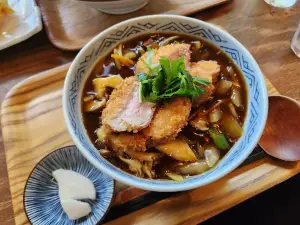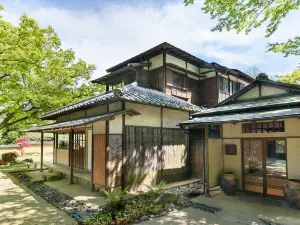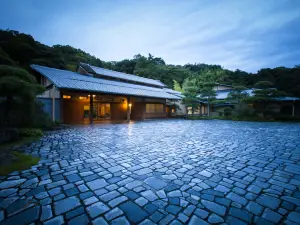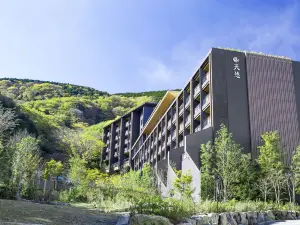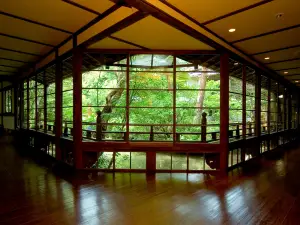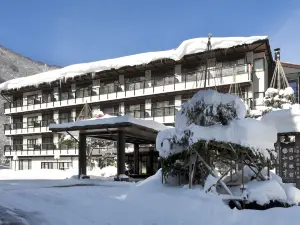Things to Do in Mount Fuji in 2025 - Top Attractions, Local Food, Hotels & Travel Tips (Updated June 2025) | Trip.com
About Mount Fuji
Recommended trip: 1.5–2.5 day(s)
Recommended trip: 1.5–2.5 day(s)Current Weather Conditions
Mount Fuji Local Experiences Map

Trending in Mount Fuji
Mount Fuji Local Travel Guide 2025
Mount Fuji Brief Guide
Mount Fuji, standing tall at 3,776 meters, is the highest peak in Japan and a symbol deeply ingrained in Japanese culture and history. Recognized as a World Heritage site, Mount Fuji is celebrated for its breathtaking natural beauty and its cultural significance as a center of worship and artistic inspiration. Historically, it has been a place of pilgrimage, attracting multitudes who climb to its summit to experience spiritual fulfillment and stunning scenic vistas. Landmark landscapes such as the Hoei Crater, shaped by historical eruptions, and the striking silhouette of its cone are iconic. The mountain is surrounded by five lakes, offering spectacular reflections of its summit and making it a favorite subject of photographers and artists. Moreover, the Fujisan Hongu Sengen Taisha Shrine provides visitors with a glimpse into the spiritual traditions associated with the mountain.
Mount Fuji Must-try Local Experiences
1. Discover the Grandeur of Mount Fuji No journey to Mount Fuji is complete without taking in its iconic silhouette. Ascend to the peak for panoramic vistas or opt for a leisurely gondola ride. Traverse the scenic Fuji Five Lakes for varied perspectives of the mountain, and indulge in water activities amidst stunning reflections and peaceful backdrops. 2. Immerse in the Serenity of Sacred Sites Pay a visit to historic temples and shrines such as Fujisan Hongu Sengen Taisha Shrine and Chureito Pagoda for their tranquil beauty and picturesque Mount Fuji backdrops. 3. Engage with Culture at Fuji-Q Highland Blend cultural discovery with exhilarating rides at Fuji-Q Highland. Enjoy record-setting roller coasters amidst an atmosphere rich in Japanese pop culture. 4. Rejuvenate at an Onsen Soothe your body and mind in a traditional Japanese hot spring with Mount Fuji as your backdrop. Bask in the therapeutic waters at esteemed onsens like Fujiyama Onsen and Benifuji no Yu. 5. Explore the Mysterious Aokigahara Forest Step into the enigmatic Aokigahara Forest, famous for its distinctive volcanic rock formations and ice caves such as Narusawa Ice Cave and Fugaku Wind Cave. 6. Participate in a Traditional Tea Ceremony Embrace the calm and artistry of a traditional Japanese tea ceremony. Learn the intricate movements and savor the subtle flavors. Don a Kimono Rent a kimono and walk through the picturesque locales around Mount Fuji. Numerous rental shops provide a selection of kimonos and accessories for an authentic cultural experience. 7. Join the Festivities at the Fuji Festival Be part of a pink spectacle at the Fuji Shibazakura Festival from mid-April to late May, with over 800,000 shibazakura flowers in bloom against the backdrop of Mount Fuji. Experience the enchantment of autumn at the Fuji Kawaguchiko Autumn Leaves Festival from early to late November—admire the vivid colors around Lake Kawaguchiko. 8. Taste the Delights of Mount Fuji Savor local delicacies such as Hoto noodles, Yoshida udon, and Fuji Sakura Pork. Delight in the unique culinary offerings of the Mount Fuji region. 9. Wander Local Markets Explore local markets like Fujisan Market for fresh produce, local crafts, and souvenirs. These markets provide insights into the daily life and culture of the area. 10. Embark on a Paragliding Adventure Take on the thrill of paragliding over the lower slopes of Mount Fuji for an adrenaline-fueled escapade. Glide through the skies and take in the sweeping vistas.
Mount Fuji Transportation
To reach Mount Fuji from Tokyo, the most popular and commonly used options are by express bus or train. The express bus is an economical and direct method, taking approximately 2 hours and 30 minutes from Tokyo to Mount Fuji 5th Station during the summer climbing season. Alternatively, train services such as the FUJI EXCURSION offer a comfortable ride with scenic views, taking around 1 hour and 50 minutes to Kawaguchi-ko Lake station. Both options are efficient for visitors planning a day trip or longer stay at Mount Fuji.
Mount Fuji Best Time To Visit
The best time to visit Mount Fuji is during the summer months from early July to mid-September. This period aligns with the official climbing season when the trails and weather most accommodate hikers of all levels. The clear summer skies offer not only breathtaking views but also the chance to witness the sunrise from the summit. Another excellent time to visit Mount Fuji is during the autumn months of September and October. The mountain showcases a spectacular canvas of vibrant colors and cooler temperatures, making it ideal for photography and sightseeing without the peak season crowds.
Mount Fuji Travel Tips
1. Book Your Climb and Hut in Advance: Making reservations is highly recommended to visitors who want to climb Mount Fuji, especially during the official climbing season. Mountain huts along the routes can fill up quickly, so book well in advance. These huts offer minimal facilities and may not have water for washing. Booking in advance ensures you have a place to rest and helps manage crowd control for a better experience. 2. Check Weather Conditions: Mount Fuji's weather is highly unpredictable. Always check the weather forecast before your trip and be prepared for sudden changes, including rain, wind, and cold temperatures. Even in summer, temperatures can drop significantly, and lightning is common. Equip yourself with rain gear, cold-resistant clothing, and proper footwear to ensure a safe climb. 3. Onsen Etiquette: If visiting hot springs (onsen) near Mount Fuji, wash thoroughly before entering the bath, don't wear swimsuits, and keep your long hair tied up. Tattoos may be prohibited in some establishments. 4. Emergency Preparedness: Familiarize yourself with emergency procedures and carry a first-aid kit. Know the locations of emergency huts and shelters along your chosen route. Save the local emergency numbers (110 for police, 119 for fire/ambulance). Mountain lodges can assist with rescue requests. Stay informed about any warnings or alerts during your visit. Be prepared for hypothermia and altitude sickness by carrying appropriate gear and supplies. 5. Proper Gear Essential: Wear sturdy hiking boots with good ankle support and anti-slip soles. Bring warm layers, rain gear, quick-drying underwear, gloves, and a hat. Carry a headlamp, trash bags, and a walking stick. The terrain is challenging, so proper footwear is crucial. Carry plenty of water and high-energy snacks as availability may be limited. Sunscreen and sunglasses are also recommended. 6. Public Transport Planning: Research bus and train schedules in advance, especially if climbing during off-peak times. Public transportation to and from Mount Fuji is not always available, particularly outside the main climbing season.
Trip.Best: Mount Fuji
Things to do in Mount Fuji
What to Do
Where to Stay
What to Eat
Japanese restaurant "Tsutsuji no Chaya" (Hotel de yama)
Ranen
Best of Mount Fuji
Site Operator: Trip.com Travel Singapore Pte. Ltd.


































